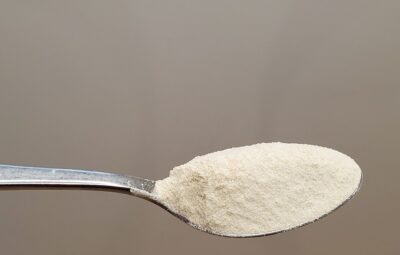If you are looking for a way to address hair loss, you may already be familiar with the medications dutasteride and finasteride.
They are a go-to medication solution for enlarged prostate. These drugs act as a blocker of 5AR, which is the enzyme responsible for the transformation of testosterone into DHT (dihydrotestosterone), by competing with 4-aza steroids.
They reduce the quantity of DHT, which is associated with the kind of hair loss that affects men.
The effects of dutasteride and finasteride are the same, yet they are dissimilar when it comes to effectiveness and price.
Here, you can take an in-depth look at the differences between dutasteride and finasteride.
What Is Dutasteride?
Dutasteride is a highly effective medicine for treating benign prostatic hyperplasia. The medication was able to reduce serum prostate-specific antigen levels by approximately half after being taken for six months. In two years, there is a decrease of about 25 percent in the total prostate size.
Dutasteride can be recommended as an individual treatment plan or in combination with tamsulosin. It can prevent symptoms associated with an enlarged prostate gland.
This medication could reduce the chance of the patient suffering sudden bladder retention, a condition with the alternate name of being unable to urinate suddenly.
It is conceivable that dutasteride may reduce the risk of undergoing prostate surgery. Dutasteride is such a common prescription because it very drastically reduces the amount of DHT in the blood — over 90%. Compared to finasteride, which can lead to 70%.
Patients should ingest the pill orally and can anticipate that their symptoms linked to prostatic hyperplasia to become less severe within a period of 3 months. It may take at least six months until the product has been fully maximized. The medication is intended to reduce the signs and symptoms, not heal the illness.
What Is Finasteride?
Finasteride can effectively combat the symptoms of prostate enlargement and male pattern baldness in men. This medication has been employed to manage the signs of excessive testosterone amounts in female patients.
Extended use of drugs designed for benign prostatic hyperplasia has been found to lower the size of the prostate. Consequently, it can help reduce the unpleasant urinary difficulties caused by an enlarged prostate gland.
Even if Finasteride can be used to treat male pattern baldness, it will not be able to completely eliminate dihydrotestosterone. It may be able to decrease the amount of hair loss, but it will not completely halt it.
This medication can be taken independently or in combination with doxazosin to treat an enlarged prostate. The objective is to control troublesome or regular urination and reduce the chances of sudden urinary retention. It could also reduce the odds of prostate surgery.
In terms of male hair loss, finasteride can assist in blocking the output of DHT on the scalp, resulting in the desired effect.
This medication is taken orally in the form of a pill. It may take up to 6 months before sufferers of prostate gland issues observe a perceptible advancement in their symptoms.
It may take as long as 3 months or more for hair to grow back. It doesn’t take long for the product to penetrate into the hair follicle, helping to promote hair growth. Patients should not anticipate that their hair count or signs of male pattern baldness will improve swiftly.
Similarities and Differences Between Dutasteride and Finasteride
These products have a lot in common. Medications are employed for treating male pattern baldness and benign prostatic hyperplasia.
They are both 5 alpha-reductase inhibitors. But, dutasteride inhibits the activities of type I and type II 5 alpha-reductase. Finasteride only blocks the action of the second type of 5 alpha-reductase.
Patients with BPH who use finasteride or dutasteride can anticipate that the size of their prostate will decrease.
Dutasteride has been approved by the Food and Drug Administration (FDA) to be used specifically for the treatment of Benign Prostatic Hyperplasia (BPH). Finasteride has been authorized for treating male pattern baldness and Benign Prostatic Hyperplasia.
Finasteride Was Developed and Patented First
Between finasteride and dutasteride, finasteride is the older drug. In the 1970s, Finasteride first came about, then was patented during the 1980s, with approval coming from the Food and Drug Administration (FDA) in the ’90s to help with benign prostatic hyperplasia (BPH) as Proscar®.
It is correct to say that finasteride, a medication which treats male pattern baldness, was originally allowed to be prescribed by the FDA to treat Benign Prostatic Hyperplasia. The effects of DHT are the cause of both Benign Prostatic Hyperplasia and male pattern baldness.
In 1997, Propecia® was given the go-ahead as a remedy for balding in men, sold under the trademark name of finasteride.
Finasteride can be employed for hair loss in a milder dosage of 1 milligram per day, contrasted to the more potent 5 milligram daily dosage for BPH (benign prostatic hyperplasia) management.
In contrast, Dutasteride was granted patent protection in 1996 and was approved by the FDA in 2001 to be used as a therapy for BPH, known as Avodart®.
Currently, Only Finasteride is FDA-Approved to Treat Hair Loss
Studies have demonstrated that dutasteride is successful in fighting hair loss, however the Food and Drug Administration has not yet given it the go-ahead as a remedy for the issue.
The FDA has given the okay for Dutasteride to be utilized as a remedy for benign prostatic hyperplasia (BPH). This indicates that it has gone through the FDA’s stringent testing and investigation procedures solely for the sale of a drug that is intended to decrease prostatic volume.
This doesn’t indicate that dutasteride is ineffective at avoiding male pattern baldness (we will explore this topic in much greater detail later on in the page) — just that it hasn’t received FDA approval for this purpose.
Studies have demonstrated that Dutasteride is an effective agent in treating and avoiding hair loss. Nevertheless, since there has not been an endorsement from the Food and Drug Administration for this use, the medicine may only be distributed as an “unlabeled” remedy for hair loss in the United States.
Finasteride Blocks About 70 Percent of DHT, While Dutasteride Blocks 90+ Percent
It appears that dutasteride may be a slightly better option than finasteride since it appears to block more testosterone from being converted into dihydrotestosterone, the hormone responsible for male pattern baldness.
In 2004, outcomes of finasteride and dutasteride regarding serum DHT (dihydrotestosterone) levels were examined and published in the Journal of Clinical Endocrinology and Metabolism.
A total of 399 patients were assessed and it was determined that administering 5mg of dutasteride per day led to a 98.4 +/- 1.2 percent reduction in dihydrotestosterone concentrations. Finasteride decreased the amount of DHT by an average of 70.8% with a variation of 18.3%.
The participants of this research were those who had an enlarged prostate, therefore the quantity of finasteride and dutasteride they received was much greater than the amounts used to treat hair loss normally.
It appears that by comparison of the milligram to milligram measurement, dutasteride is more proficient at lowering dihydrotestosterone levels than finasteride.
The study revealed that dutasteride can be more reliable at preventing dihydrotestosterone. The dutasteride group had almost absolutely no deviance in their dihydrotestosterone (DHT) levels, while the finasteride group had a variance of +/‐ 1.2 percent; conversely, the finasteride group had a variance of +/‐ 18.3 percent.
This can be rephrased as: Essentially, this indicates that dutasteride could, possibly, be better at bringing down DHT levels, and in its DHT-obstructing effects, more consistent than finasteride.
Dutasteride vs Finasteride Effectiveness
Many investigations have looked into how effective dutasteride is compared to finasteride. The primary difference is in their potency.
Research shows that taking dutasteride will cause a much more significant reduction in the amount of DHT in the blood than taking finasteride. A 2019 report supports these claims. This research had a sample size of 576 people, which enabled them to measure the effects of both of these drugs.
The results showed that dutasteride was more effective in treating male pattern baldness. Patients with male androgenetic alopecia saw an increase in hair growth and total number of hairs as a result of this treatment. A 2017 report demonstrated that dutasteride is more effective than finasteride when it comes to hair regrowth.
Research has shown that taking finasteride reduces the likelihood of developing prostate cancer. Mainly in patients with frequent disease monitoring.
Males who took the medication regularly for a few years experienced a dramatic reduction in the chances of getting prostate cancer. The evidence suggests that the medication could increase the chances of having advanced prostate cancer.
Which Has Fewer Side Effects, Dutasteride or Finasteride?
It is essential to discuss the adverse effects when comparing dutasteride and finasteride. These medications, as with other products of the same type, can lead to sexual adverse reactions.
Potential adverse reactions to dutasteride include erectile dysfunction, disruption of ejaculation, and diminished sexual desire. It can also cause exhaustion, dizziness, and headache.
Common side effects of finasteride include decreased sexual desire and inability to maintain an erection. Difficulty keeping or achieving an erection, issues with coming, and soreness in the testicles can be caused by it. Negative reactions may involve a rash, welts, itching, puffiness, difficulty in swallowing or inhaling.
Experts state Finasteride caused fewer negative repercussions on sexual health for males with benign prostatic hyperplasia. Therefore, Finasteride is deemed to be a preferable treatment for the primary issue. The amount of patients who discontinued the use of dutasteride due to its sexual side effects was higher compared to any other measured outcome.
Approximately 5.1% of men in the dutasteride group chose to discontinue due to problems with erectile dysfunction. The finasteride group had a 2.1% incident rate, which was the same rationale for comparison.
The other side effects that caused people to stop taking dutasteride included decreased sexual desire, trouble ejaculating, and boobs that were sore or bigger than usual.
Both medications are effective. Given the divergent nature of their side effects, finasteride might be the preferable choice.
Research on Finasteride vs. Dutasteride for Hair Loss
The results of the study indicate that both finasteride and dutasteride can be successful in stimulating hair growth in men with male pattern baldness.
In some direct comparisons between the two medications, dutasteride was revealed to be more effective in promoting hair growth in men than finasteride.
Studies of Finasteride and Dutasteride
A recent study printed in the Journal of the American Academy of Dermatology gathered information from 416 guys dealing with male pattern baldness, and the results showed that those who took dutasteride experienced a bigger raise in their area of hair count compared to those taking finasteride.
The men who were assigned dutasteride were given a daily dosage of either 0.05mg, 0.1mg, 0.5mg, or 2.5mg, while those who took finasteride had a 5mg dose, which is significantly higher than the amount usually suggested to deal with baldness. The research spanned a total of 24 weeks.
The researchers employed the opinion of a panel of experts, as well as pictures taken before and after, to compare and confirm the effects of the two medicines.
Several ideas exist as to why dutasteride has a more prominent effect on hair growth for men with male pattern baldness than finasteride.
It is possible that the greater ability of dutasteride to stop the production of DHT is the cause of its success in treating male pattern baldness.
It is possible that dutasteride is used more than finasteride as it has a greater duration of action in the body after ingestion.
The length of time it takes for half of one dose of dutasteride to leave the body is around five weeks, signifying that the effects of a single dose of the drug can stay in the body for a few months.
The quantity of Finasteride in the body declines to half of its initial amount after around five to six hours. Finasteride has a shorter duration of activity in the body compared to the typical dose of dutasteride.
Naturally, this does not indicate that finasteride is inefficient at preventing male hair loss. Research has indicated that men can experience a decrease in their hair loss and potentially notable improvements in hair growth with the use of finasteride.
Two consecutive studies that were each one year in duration revealed that males who took finasteride experienced a significantly larger amount of hair and a visible diminishment in shedding.
A research project from Japan that examined the efficacy of finasteride for a full decade demonstrated its usefulness in treating male pattern baldness.
In this research, it was determined that almost all of the balding men (99.1%) who took finasteride for 10 years halted their hair loss while under the drug’s effects. Nearly all of the male participants saw a rise in hair growth when they were taking finasteride.
The majority of males who have baldness and employ finasteride generally observe that their hair loss decreases, ceases or even regains status after several months.
Research implies that dutasteride could possibly be more successful than finasteride for increasing hair growth in males; however, this does not suggest that dutasteride is the preferred option over finasteride for hair loss applications.
It is advisable to consult a medical practitioner if you are experiencing hair loss and to find out which hair loss therapy will work best for you.
Conclusion
Prescription drugs finasteride and dutasteride are used to manage BPH (benign prostatic hyperplasia) and baldness. The medications are accepted by the Federal Drug Administration and are effective in delivering a strong advantage.
Dutasteride has better efficacy than finasteride. It appears to be more economical over time. Finasteride could be a better option when it comes to dealing with any potential side effects.
These drugs can be combined with other medications to increase their effects. Only a physician can advise which choice is more appropriate for your situation.
People who prefer the more natural route may find tangible advantages with other natural options. Such supplements involve saw palmetto, ecklonia cava extract, pumpkin seed oil, stinging nettle and green tea.







